Ensuring a proper fit for your backpack i as important as getting the right fit for your boots. A badly fitting pack can inflict misery and discomfort on your outdoor adventure. It can drastically reduce the lifespan of the product itself.
That is why we recommend coming to visit us at the Hereford shop. Here we can offer you our Personal Rucksack Fitting Service, complete with friendly chat and advice. This allows you to try on multiple options with a realistic weight inside. Followed by having an experienced member of staff adjust the pack perfectly to your frame. However, if you can’t come to us then we shall come to you in the form of this blog. Here, we’re assuming you already have a rucksack in your possession.
Adjusting the Back Length
Firstly, we need to find out how long your back is. Your back length is not related to your height but your torso length. Two people who are both the same height may have drastically different back lengths. Many packs, specifically the bigger and more technical packs, are available in different back lengths or feature adjustable back systems.
Your torso length can be found by measuring from your C7 vertebra (the bony protrusion at the back of your neck when looking down).
To the height of your iliac crest (top of your hip bones, where you put your hands on your hips).
This measurement will give you an idea of which pack back length to choose.

As a rough guide, most sized back lengths fit as follows:
SMALL OR WOMENS: 15-20”
REGULAR PACK: 19”-22”
LARGE PACK: 19”-24”
Once you’ve got the back length sorted, either select the correct size pack or adjusting the back system. Begin to follow these simple steps to help achieve a comfortable carry.
Tips for fitting your backpack correctly
Loosen off all straps
Start by loosening off all straps- this initial step ensures you have a blank canvas to work with before meticulously adjusting the backpack to your specific size and comfort needs. Take your time during the whole process. It will help you enjoy a more comfortable and hassle-free outdoor adventure.
Tighten the hipbelt
The general position is the same as where you’d put your ‘hands on hips’.
This area is called the pelvic girdle, and what you can feel when you rest your hand on the area is the bony protuberance—the iliac crest.
The iliac crest can support the weight from a pack comfortably, and for sustained periods. The padded section of the hipbelt should encompass this and fit securely.
Tighten the straps so the hipbelt feels secure and held firmly around your body. Remember that your hips carry most of the weight of the pack, so this should be firm but comfortable.
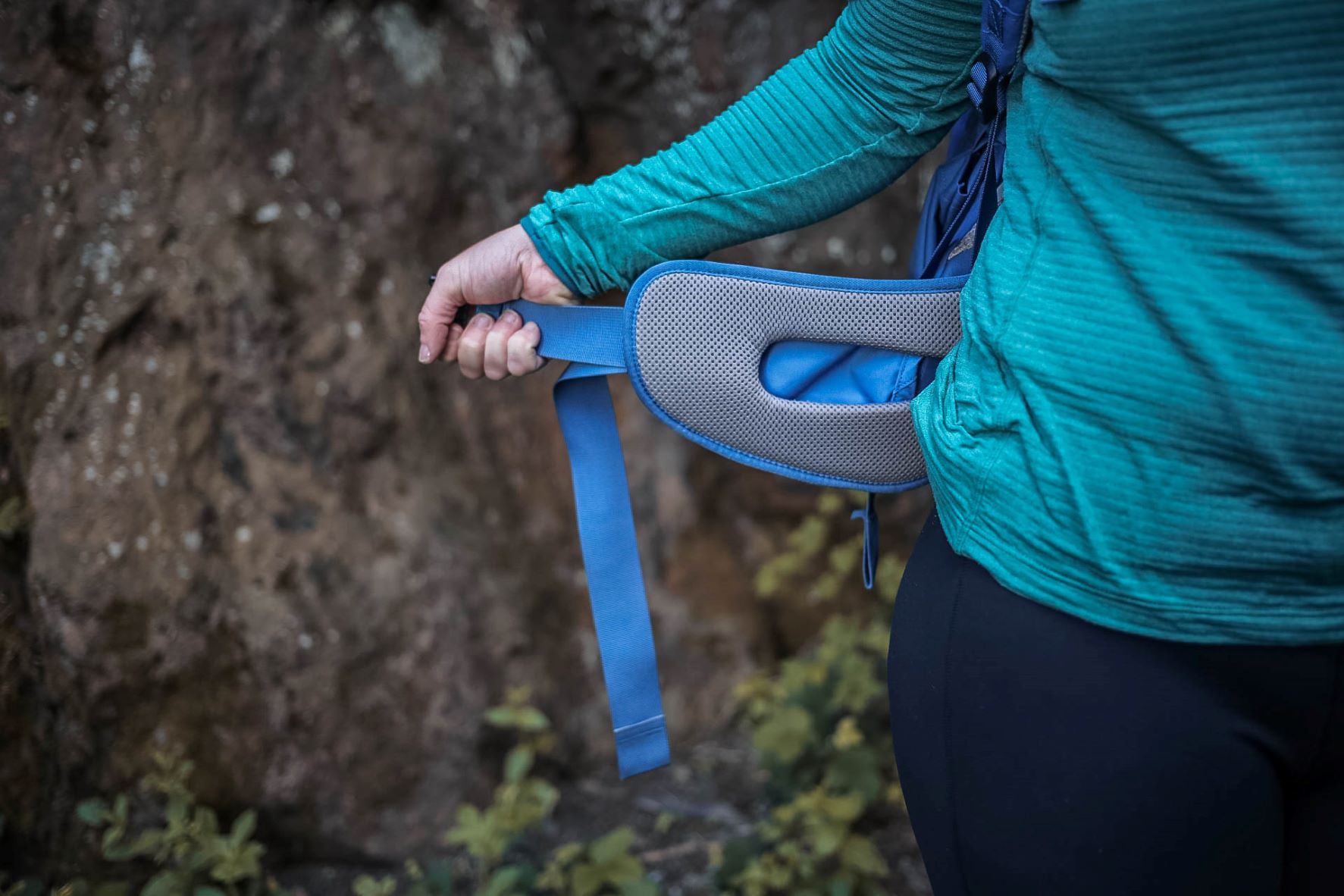
Adjust the Shoulder Straps
Pull the shoulder straps until they start to become snug, but ensure that they are not too tight as to lift the pack off your hips.
You should feel as if around 70% of the weight is sitting on your hips and the other 30% on your shoulders.
If the back length of the pack is correct, the shoulder straps will be flush to your shoulders whilst the hipbelt sits in place comfortably.
The point where the shoulder straps attach to the main body of the pack should be roughly half way down your shoulder blades. This ensures that the shoulder straps rolls evenly over the top of your shoulders to distribute the weight correctly.

Adjust the Chest Strap to fit your backpack correctly
Fasten the chest strap and pull until taut but not tight—the elastic section should not be extended.
The purpose of the chest strap is to prevent the shoulder straps migrating to your shouldersIt also protects you from falling off entirely and ending up on your arms.
If you can feel the shoulder straps digging into your neck, you’ve pulled too tight.
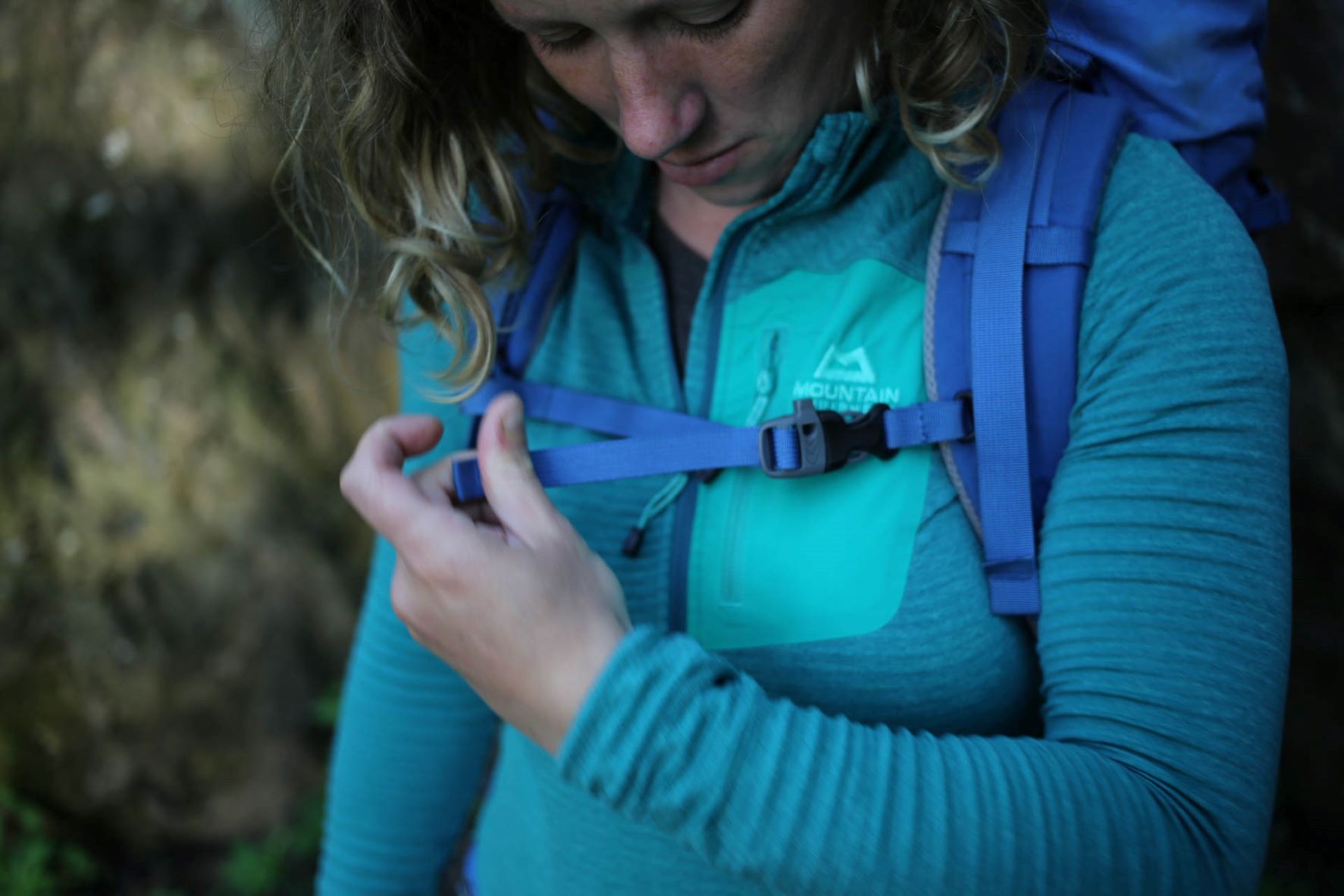
Adjusting the Top Tensioners
Top tensioner straps link the shoulder straps to the top of the pack.
When tightened, their main function is to stabilise the upper half of the pack.
The optimum angle for these straps in 45º, but they will stabilise the load even when horizontal or at a more obtuse angle.
Grip the strap with your finger and thumb and tighten them until you feel the top part of the pack rest against your pack. Over-tightening them will create excessive pressure on the front of your shoulders.
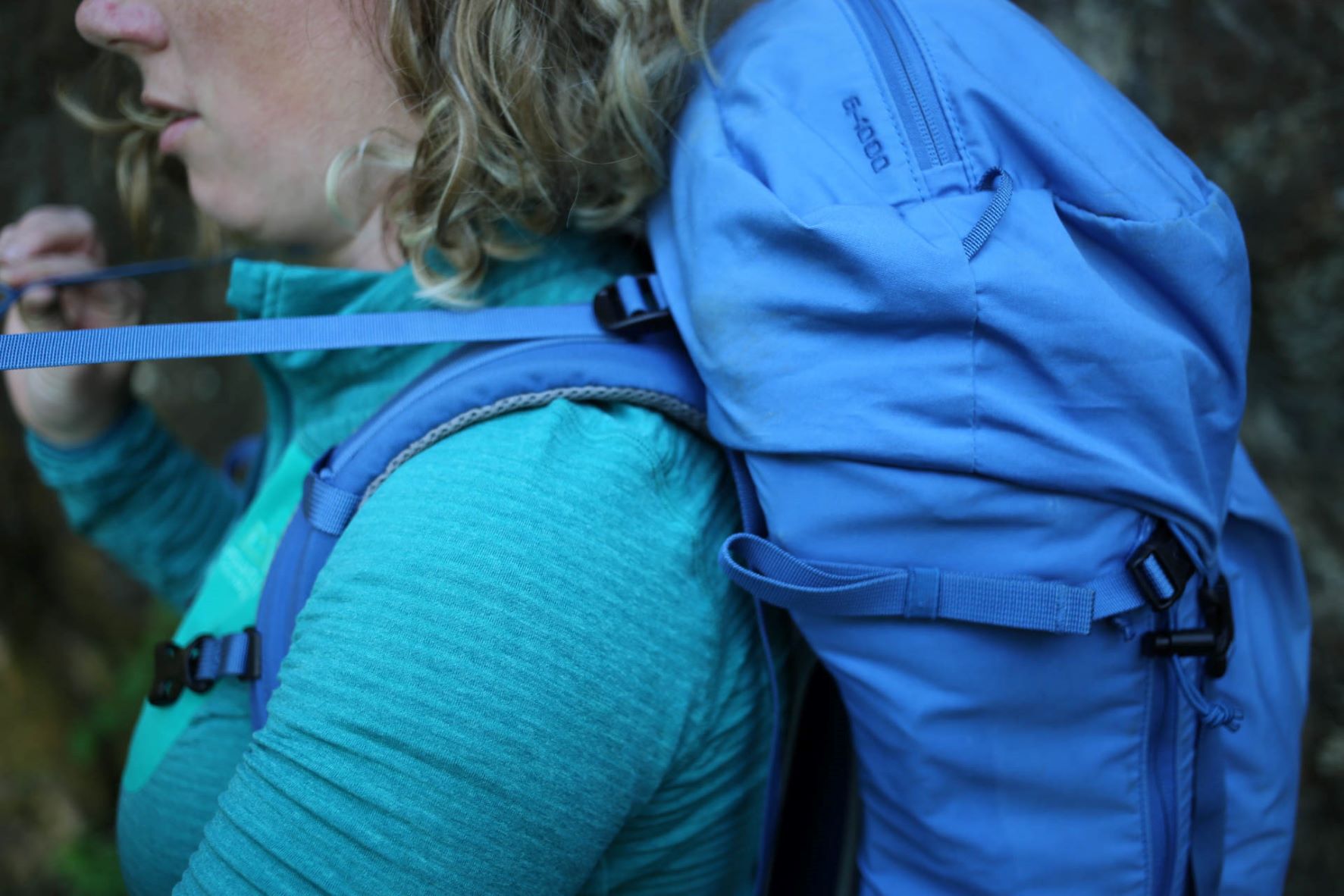
Adjust the Side Tensioners
If you have them, side tension straps link the main pack body to the hipbelt.
By tightening these straps you can stabilise the load but reduce the hipbelt flexibility. Where balance is critical tightening them can help you feel more secure.
However, if you are striding out over easy terrain it’s better to loosen these straps to allow full hip flexibility.
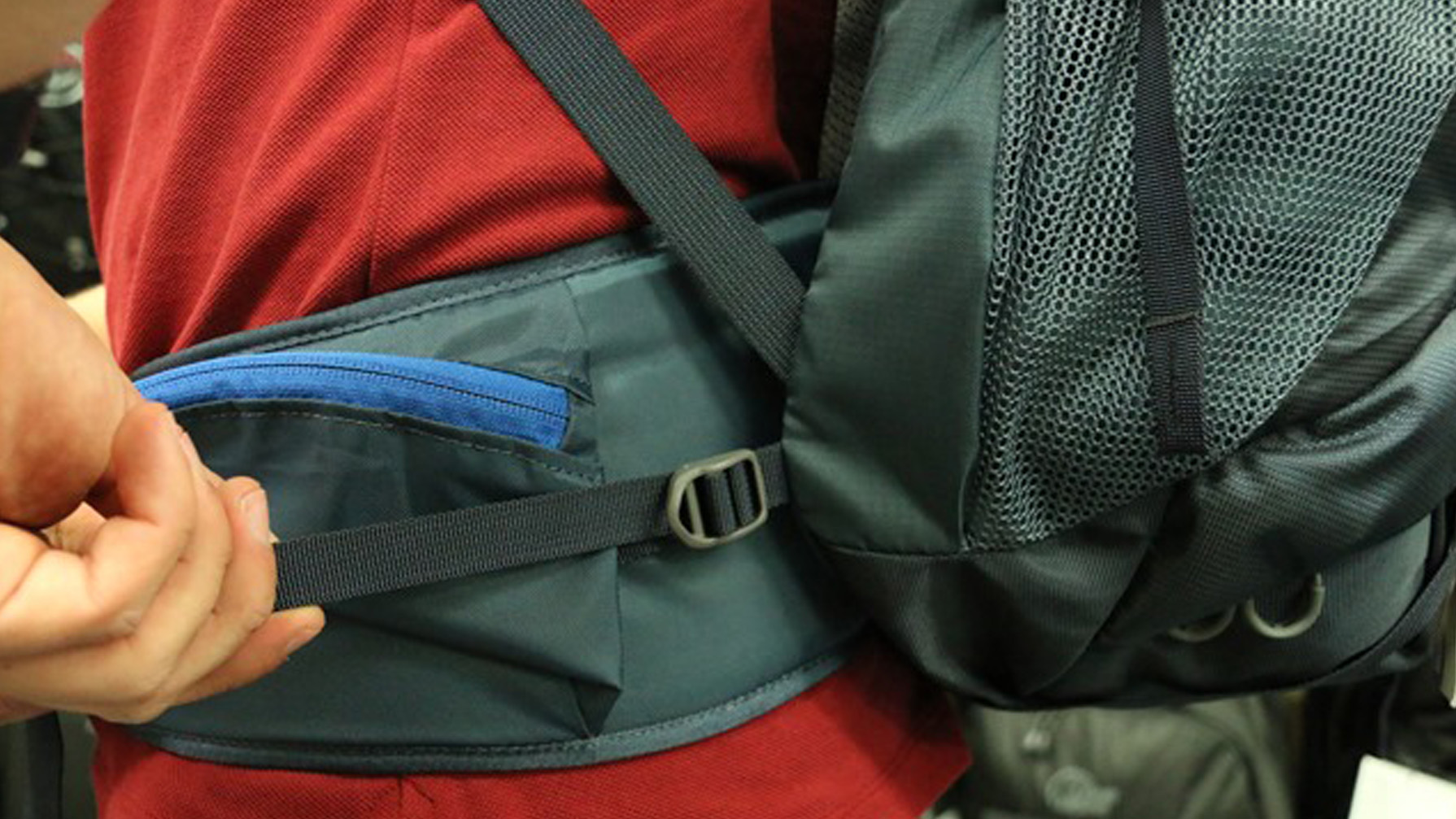
Adjust the Side Compression Straps
Side compression straps come next.
Pulling these tight does two things.
Firstly, it stabilises the load, preventing your kit from falling about inside if you’re not fully laden.
Secondly, it pulls the weight inside the pack closer to your back.
The closer it is to your back, the more centred it is over your hips, which consequently puts less strain on your back.
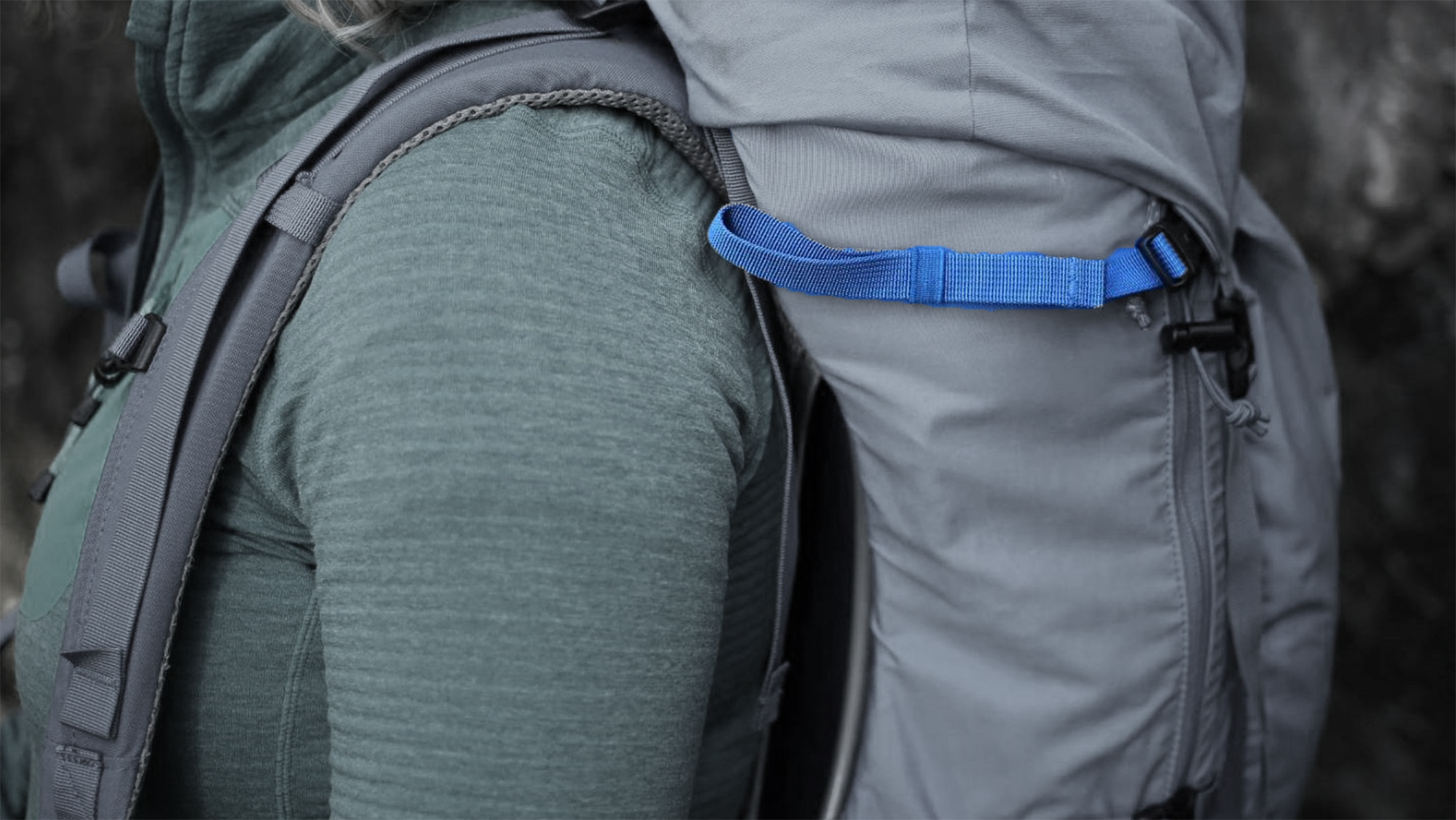
Fit your backpack: Achieving the perfect comfort and security
Following these steps should help you fit your backpack comfortably and securely, provided the rucksack you have chosen is suitable, but it may not be perfect straight away.
Adjustments will need to be made on the go depending on the terrain and the load you’re carrying.
Play around with the pack until you’ve got it to your liking—don’t be afraid to change things if something feels off.
If you can’t get it quite right, you can contact our helpful customer service team who will be able to assist you; either helping you fit your backpack correctly or to advise on a suitable alternative. You can contact them here.

Leave a Reply